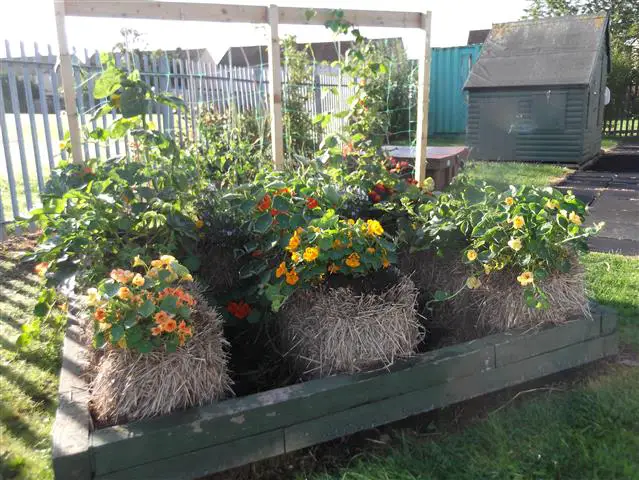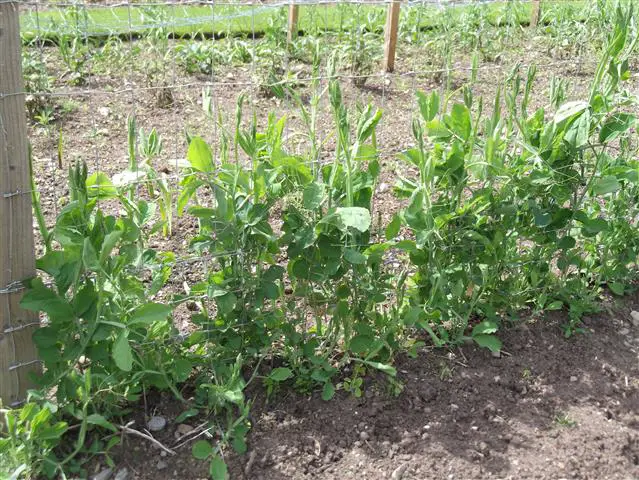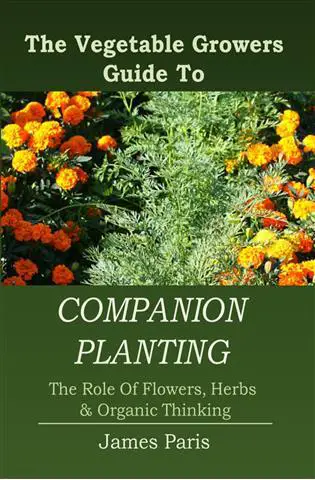Companion planting methods for veggie gardens in particular could be fairly called essential knowledge for any gardener. This applies to growing vegetables, flowers or indeed fruit trees and shrubs.
For this reason I find it handy to keep a quick companion planting tutorial or ‘cheat sheet’ for reference, and indeed why I include this guide as a free bonus pdf download (click on the link) .
(click on the link) .
A quick tip if you have a laminator – this is in A4 size and laminating it will keep it for ages hanging up in the garden shed or greenhouse!
Of course this is not a complete planting guide for your veggies (is anything ever complete!), but something to get started with at the very least.
The benefits of companion planting

This is an ancient way of growing plants, and highly beneficial if used correctly as many experienced gardeners will tell you. For the vegetable grower in particular, companion planting methods have many benefits including the following.
- Use less plant food: Growing plants together can be of mutual benefit as for instance growing legumes such as peas and beans next to nitrogen-hungry vegetables such as cabbage, carrot, cucumber, or corn to name just a few. The reason for this is that legumes fix nitrogen into the soil through a symbiotic relationship with bacteria in the soil which release nitrogen in return for carbohydrates from the legumes.
- Pest protection: Growing aromatic herbs such as basil, oregano, or chives for instance, distracts the destructive pests such as the carrot fly. Flowers such as dwarf marigold or nasturtium also help to distract harmful pests and in turn attract beneficial insects such as the hoverfly whose larvae will feed on any aphids on the plants. Nasturtium in particular is often used as a ‘sacrificial’ plant because it will attract aphids from the greenfly or blackfly away from your precious veggies.
- Weather protection: Some plants are excellent for providing protection from hot dry weather or indeed the ravages of strong winds. With their large leaves, growing zucchini or eggplant or squash at the base of taller plants such as tomatoes or corn help to shade the base of the plant and stop the soil quickly drying out. They also help break up strong winds that may wreak havoc on your tall plants.
- Plant support: Taller plants with strong stems like corn or sunflowers provide excellent natural support for peas and beans.
Good and bad companions:
Just as in life, not all companions are good to have around! As you will see from the companion chart below, there are some plants you definitely do not want to plant next to each other for a variety of reasons.

French marigolds mentioned earlier make excellent companions for tomatoes as they prevent root-knot nematode (destructive for tomatoes) eggs from hatching in the soil. Indeed French marigolds can often be seen throughout a vegetable garden for this reason and also because they attract the hoverfly.
Some plants suffer from the same diseases or insects, while some plants are allelopathic (they actively discourage company). As an example it is unwise to plant potatoes and tomatoes close together as they can both suffer from potato blight.
This means that if you get the Phytophthora (from the greek meaning ‘plant destroyer’) fungus or blight on your potatoes, then your tomatoes will soon contract the disease if they are nearby.
(from the greek meaning ‘plant destroyer’) fungus or blight on your potatoes, then your tomatoes will soon contract the disease if they are nearby.
Peas, peppers, and beans make bad companions for onions (including garlic) as neither will grow very well if they are in close proximity, and may suffer stunted growth.

Aromatic herbs such as basil, oregano, chives, parsley, and sage, make excellent companions for most veggies because they distract destructive pests with their smells. Basil in particular seems to encourage the growth and even flavour of tomatoes while celery (apparently) improves the flavour of broccoli when grown close together.
Geraniums are often planted in vegetable gardens to discourage leaf hoppers and corn earworms.
Allelopathic plants (mentioned above) are plants that create soil conditions best suited to themselves, and so actively discourage or stunt the growth of other plants grown nearby.
Examples of vegetables that could be described as slightly allelopathic include carrots, parsley, onion and dill plants, and all brassicas to a greater or lesser degree.
Plants such as rhododendron, azalea, sunflower, elderberry, and most pine trees are also allelopathic and will make life difficult for plants grown around them.
Check out the chart below for a list of good and bad companions for the vegetable garden.
| VEGGIES | GOOD COMPANION | BAD COMPANION |
| ASPARAGUS | tomato, parsley, basil | onions, garlic, potatoes |
| BEANS | beetroot, cabbage, celery, carrot, cucumber, corn, squash, pea’s, potatoes, radish, strawberry. | garlic, shallot or onions |
| BEETS | broccoli, brussels sprouts, bush beans, cabbage, cauliflower | charlock, field mustard, pole beans |
| CABBAGE | cucumber, lettuce, potato, onion, spinach, celery. | strawberries |
| CARROTS | beans, peas, onions, leeks, lettuce, tomato, and radish | Dill, parsnip |
| CELERY | bean, tomato and cabbage family | corn, Irish potato and aster flowers |
| CORN | potato, pumpkin, squash, tomato, cucumber | tomatoes, celery |
| CUCUMBER | cabbage, beans, radish, tomato | late potatoes |
| EGGPLANT | beans, peas, spinach, tarragon, thyme | fennel |
| GARLIC | cabbage, cane fruits, fruit trees, tomatoes | peas, beans |
| LETTUCE | carrot, beet, onion, and strawberry | cabbage family |
| MELON | pumpkin, radish, corn, and squash | potatoes |
| ONIONS | cabbage family, beet, tomato, strawberry, and chard | beans, peas, peppers asparagus |
| PARSLEY | asparagus, carrot, tomato and corn | mint |
| PEAS | beans, carrot, corn and radish | garlic leeks, onions, shallots |
| PEPPERS | tomato, eggplant, carrot and onion | fennel, kohlrabi |
| POTATOES | bean, cabbage, squash and peas | apples, cherries, cucumbers, pumpkins, sunflowers, tomatoes |
| PUMPKIN | melon eggplant and corn | potato, raspberry |
| RADISH | carrot, cucumber, bean, pea, melon | hyssop |
| SQUASH | melon, pumpkin, beans, cucumber, onion | potato, tomato |
| STRAWBERRY | bean, lettuce, onion and spinach | cabbage, broccoli, brussels sprouts |
| TOMATOES | celery, cucumber, asparagus, parsley, pepper and carrot | fennel, kohlrabi, potatoes |

